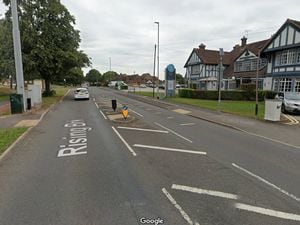Hospital bosses apologise to patient over surgery on wrong part of the body
A patient who had surgery at one of Shropshire’s acute hospitals has received an apology after the procedure was performed on the wrong part of the body.

An investigation has been launched by the Shrewsbury and Telford Hospital NHS Trust (SaTH) into the circumstances of the incident, which has been classed as a ‘never event’ – the name given to incidents that are considered so serious they should never happen.
A report presented to the trust’s board of directors at a meeting on Thursday said a full apology was given after the procedure in July, and the patient’s questions will be considered during the investigation.
It explained that two lesions had been identified for removal, one at a time, but the wrong lesion was then removed during the first operation.
The report added that the patient was “a little anxious but understood that lesions did need to be removed”, and plans were made for a further procedure to remove the correct lesion.
There were also 11 ‘serious incidents’ recorded that month between the Royal Shrewsbury Hospital and Telford’s Princess Royal Hospital, along with eight in August, the report said.
Full investigations are underway into the incidents, which included a delayed diagnoses, medication errors, a number of falls resulting in fractures and head injuries, and a “missed opportunity to identify psychosis”.
The report also details the 11 serious incident investigations that were concluded in July and the eight that were closed in August.
A number of cases involved child patients, with concerns raised over how deterioration in their condition was monitored and escalated.
In three separate cases, a sick child’s Paediatric Early Warning Scoring (PEWS) was calculated incorrectly.
The report said: “Each case has undergone an individual serious incident investigation, in addition to a thematic review of the themes and trends across all of the reported cases.
“Paediatric Transformation Programme [is] now in place to monitor actions and improvements.”
In one case, the report said: “There were occasions when the vital sign observations were late and the PEWS score was incorrectly calculated which impacted on the required frequency of observation and possible earlier intervention.”
In a second incident, the report said: “There were inconsistencies with how the child's acuity was described and resulting actions.
“There were inconsistencies with frequency of observation monitoring. PEWS scores calculated incorrectly.”
A third child’s case flagged up issues around “communication/data sharing between hospital and community settings” and “uncertainty in the optimum routes for very unwell paediatric patients and a lack of cohesion between emergency department and clinical assessment unit”.
The investigation into the incident also identified that “PEWS scores [were] calculated incorrectly and inconsistencies with observation frequency”, the report added.





